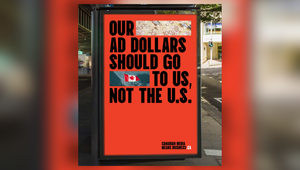
Looking Back to the Year Ahead: What We Might See from Brands in 2024

Image credit: Javier Allegue Barros via Unsplash
January: the time of year for resolutions and buying running shoes and telling anyone who will listen that you’re ‘feeling really good about this year’, whether you believe it or not.
Also, in our industry at least, the time of year for predictions. For bold statements, for hot takes and ‘things we’d like to see.’
At White Crow, we’re not immune to the odd prediction or bit of future-thinking, but we prefer to go about things a bit differently. To gently riff off William Gibson’s old phrase, ‘the future is here, just not very evenly distributed’, we’d argue that when it comes to brands and businesses in any year ahead, it’s more helpful to look at what we’ve started to see than what we imagine will come.
This takes us to White Crow’s three drivers of change for 2024. Three observations from last year that, in a range of different contexts and categories, might give an indication of what we’ll see more of in the year ahead.
1. Don’t tell me you care, do me some good.
“Care signalling” is an occupational hazard for anyone working with brands. They simply can’t help but tell us how much they care. Whether that’s “your call is important to us”, “we take all complaints very seriously”, or a four-foot mural artfully depicting “customer-centricity” on an office’s sales floor. To some extent, it’s wholly understandable - if your brand is your business’s public presence, it doesn’t do much good to go around telling people that you only care so much as is operationally viable.
But in a year of real financial hardship - with spiralling utility bills, mortgage payment rises and a continued fear of economies tipping into recession - brands, and their customers, began to realise that saying you care and showing you care aren’t quite the same thing.
Instead of the usual platitudes, we’re seeing the best brands start to talk in real terms to people and offer tangible benefits. In household energy, a sector that’s found itself in the firing line of public ire, Octopus Energy and Ecotricity stand out - investing disproportionately in customer service and communicating with empathy and openness, while their competitors remain increasingly hard to get hold of. In grocery, we’ve seen Tesco champion “5 easy family dinners for £25” - a genuine acknowledgement that it can be hard to put food on the table for many people, with a genuine solution to match it.
The economic outlook may begin to look rosier in 2024, but it also may not. And in any case, people won’t suddenly become flush with disposable income overnight. Expect to see more brands start to offer genuine help and champion practical benefits, rather than doubling down on page 21 of their tone of voice guidelines.
2. Employees: are you on board, or not?
We’ve spent a lot of time over the years working with clients to craft their employee value propositions and build their employer brands. It’s always been a peculiar pleasure - working with teams who more often than not come from HR, getting a sense of a company from the frontlines of the factory floor and the staff room, and crafting communications for the most battle-hardened, bull-shit averse audience of all - employees.
Last year was no different, with a steady stream of internal culture and EVP briefs coming our way, but one thing seemed to change. While the briefs were broadly similar in output, their tone was markedly different. If before, the emphasis would be ‘capturing our company culture’ or ‘unifying our teams around a shared set of values’, it has now increasingly become ‘help change the way we think as a business’, or ‘get people on board with a new way of doing things’. In short, the usually quite gentle, well-meaning ambitions of employer branding had grown teeth.
It’s tempting to see this shift as evidence that, when commercial pressures ramp up, there’s less willingness to be seen as a nice, fluffy place to work, but actually we think it’s down to some slightly more subtle factors. The pandemic, and all the disruption it brought, had accelerated the need to change some business critical elements - whether that was adapting to new market conditions, new hybrid ways of working, or simply trying to recover after 2 years of lost revenue. While the ‘great resignation’ of 2020-22 had left many businesses with skills shortages and a need to bring lots of new people on board, quickly, it also meant that employer brands had both a necessity and an opportunity to reset the dial-to build the workplaces they wanted to see, in line with the changes they wanted to implement.
As we look to 2024, expect to see more businesses looking to bring about a cultural reorientation internally. To refocus teams around clear commercial goals, and to ask their employees the question, are you on board with where we’re going, or not?
3. ESG - Extremely Sexy Guidelines
Debates around brand and social purpose have ebbed and flowed. Not so long ago, having a clear and stated ambition to ‘do good’ as a business was heralded as a surefire way to achieve growth. We were told consumers would increasingly put their money where their ethics were, boycotting any brand with a less-than-spotless track record on social or environmental matters.
The reality, inevitably, was less black and white. Some customers do like buying from brands that claim to make a positive impact in the world, but more prioritise buying from brands that make products they like, tell stories they connect with and don’t cost the earth.
The cost of living crisis has played its role in the ebbing of social purpose, as have a few high-profile brand examples of misplaced faith and outright hypocrisy. But perhaps the biggest shift we’ve begun to see is a change in where stories of doing good are being told and to whom.
While far less eye-catching than a mission to change the world, the fairly dry, compliance-led field of ESG reporting is growing. Firstly out of legislation: already companies of over 500 people or £500m in turnover need to disclose their sustainability data, while new guidelines last year have ramped up this reporting need further. Secondly, it’s becoming a commercial imperative - with more investors seeing a strong ESG record as a prerequisite for funding, and potential employees increasingly turning to ESG as a means of weighing up whether a company is right for them.
In light of all this, brands are beginning to see ESG as another place their story is put into the world. As we look to 2024, start to see ESG reporting get a distinctly sexy makeover - stories told, rather than data baldly stated; a branded tone of voice, rather than legalese hidden next to a modern slavery statement; a communications channel that won’t win over consumers’ hearts and minds, but might help flesh out what a brand stands for, and why.
So there you have it. White Crow’s three drivers of change for 2024. Three areas where we think brands will start to have an outsized voice or will start to do things differently. And not one mention of AI in sight.















